Travel to Mysore, India – Episode 740
categories: asia travel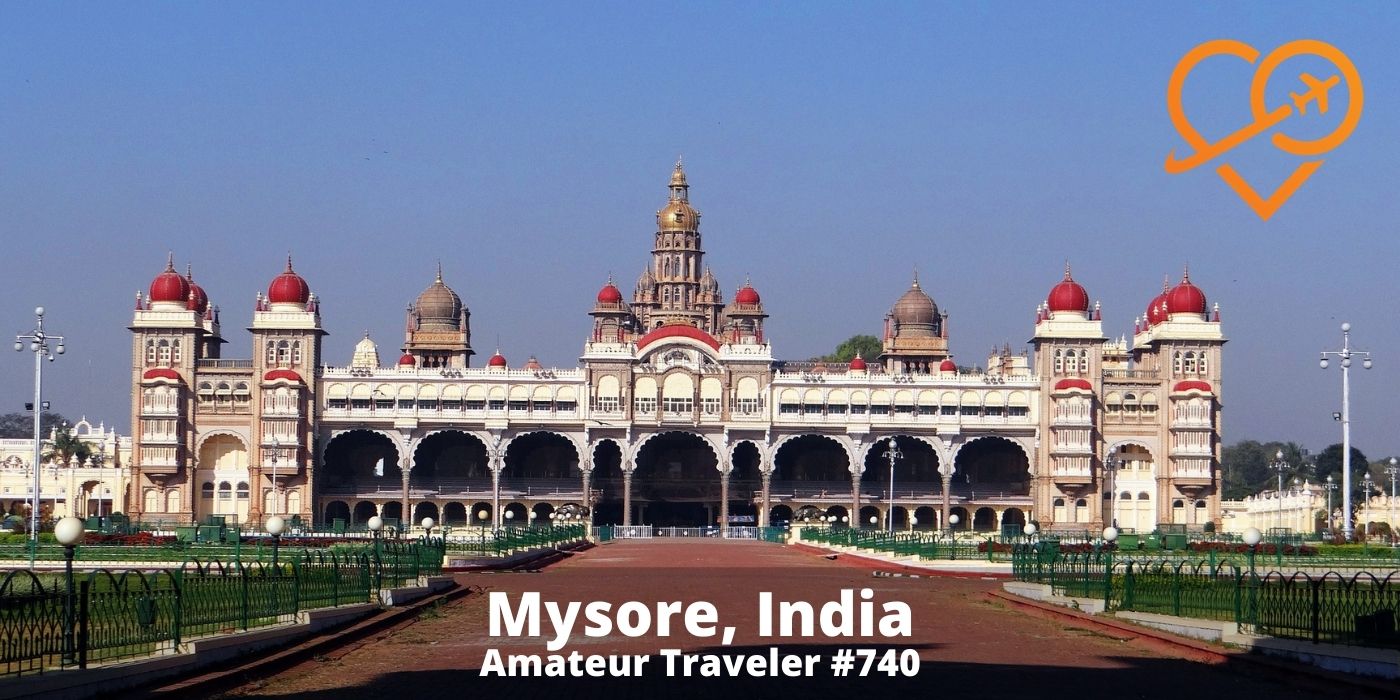
Hear about travel to Mysore, India as the Amateur Traveler talks to Rahul Iyer about the city of palaces in the Indian highlands.
Rahul says, “I have been to Mysore several times. My mother is originally from Mysore and grew up there. I actually have a lot of family and friends in Mysore. It is a very unique and royal city. It is an old royal city. There are tons of palaces in the city. I happen to be an archeological buff and an art buff. That’s what Mysore provides. That coupled with the fact that Mysore is in a climate that is a lot more tolerable compared to the rest of India because of its elevation. It is a lot less stressful, in my opinion than in the rest of India. You have two royal families that claimed control of Mysore at different times. You have the maharajah of Mysore the Wadiyar dynasty and then you have the Tipu Sultan. They fought with each other at times. You have got a very deep culture and history.”
Rahul recommends a 5-day itinerary for Mysore. He recommends flying into Bangalore and taking a train to Mysore. Mysore has a domestic airport. There are some nice hotels and simple hostels in the city. He recommends the luxurious Lalitha Mahal Palace Hotel which was built as a retreat by the maharajah of Mysore. If you get there in time the day you arrive get to the Mysore Palace when it is illuminated at 7:00 pm.
The first day he recommends taking a half-day to visit the Mysore Palace. Get there early to avoid the long lines at this popular attraction. You can see the audience chamber for the maharaja, the historic murals, the numerous restored carriages, and the beautiful gardens. The Wadiyar dynasty ruled from the late 1300s but this palace was completed in 1912.
The Jaganmohan Palace is another palace from the same family that is now an art museum. You can tour some of the rest of the mansions and palaces in the city by auto rickshaw or you can rent a bike and cycle around the city.
You can visit the Chamundi Hills which have a view of Mysore. There is a Hindu temple there that overlooks the city. You can get a great view of the city including the palace from there.
For your second day, Rahul recommends a tour to the outlying temples in places like Belur, Halebidu, and Shravanabelagola. Shravanabelagola is a pilgrimage site for the Jain religion with a large statue. Emporer Chandragupta Maurya came here on pilgrimage in the 300s BCE. Halebidu is a Hindu temple that dates back to the 12th century. Belur is a 12th-century Vishnu temple.
For day 3 Rahul recommends the museums (the Railway Museum and the Natural History Museum in particular) and a visit to the Devaraja Market. Rahul also sends us out of town to see the butterfly sanctuary and botanical gardens out at Karanji Lake.
For day 4 Rahul sends us to the dam and gardens at Krishna Raja Sagara. Then in the town of Srirangapatna, you can see the palace of the Tipu Sultan.
For day 5, Rahul schedules a catch-up day for what you did not fit in the first 4 days.
We talk about the typical south Indian food you can find in Mysore. This is a region where much of the food will be vegetarian.
Learn why Mysore might be a place to add to your next India itinerary.
subscribe: rss feed | Apple podcasts
Sponsors
This episode of Amateur Traveler is sponsored by AthleticBrewing.com the ?North America Brewer of the Year at the 2020 International Beer Challenge.
To try their award-winning non-alcoholic beers at AthleticBrewing.com. Use the code Travel20 and get 20% off your first order. Free shipping on orders of two 6-packs or more or use their store finder to find it on shelves near you.
- Search for Great Tours HERE
- Get an eSim to be able to use your smartphone abroad.
- Get a universal plug adapter
- Buy Travel Insurance
- Get a Car Rental
- Book Your Accommodation HERE
right click here to download (mp3)
Show Notes
Mysore
Wadiyar dynasty
Tipu Sultan
Railway Museum, Mysore
Lalitha Mahal Palace Hotel
Mysore Palace
Dosa
Sambar (dish)
Mysore Dasara
Jaganmohan Palace
Vinayaka Mylari, – Restaurant
Cheluvamba Mansion
St. Philomena’s Cathedral, Mysore
Trin Trin: Public Bicycle sharing system in Mysore – About Trin Trin
Chamundi Hills
Belur, Karnataka
Halebidu
Shravanabelagola
Maurya Empire
Chandragupta Maurya
Hoysaleswara Temple
Jainism
Regional Museum of Natural History Mysore
Devaraja Market
Dufferin Clock Tower (Chikkagadiyara)
Karanji Lake
Cauvery
Mysore style
Krishna Raja Sagara
Balmuri Falls (Srirangapatna)
Srirangapatna
Community
Carol on Travel to Saskatchewan – Episode 666
Hello. Re: strangely episode 666
I find it insulting that woman didn’t have the grace to mention Wanuskewin Heritage Park – minutes outside Saskatoon.
Further, another activity to do in Saskatchewan almost anytime in summer is to attend a Pow wow. She waxed on about her heritage conveniently omitting the First Nations people. It could be accommodated to have a guest host to share the exciting experiences one can have in Saskatchewan with the Indigenous peoples and culture.
Carol
Support Amateur Traveler on Patreon
Please take our listener survey
Amateur Traveler Trips
Amateur Traveler trip to Turkey in September 2020
Images by pranavsinh Suratia and Bishnu Sarangi from Pixabay
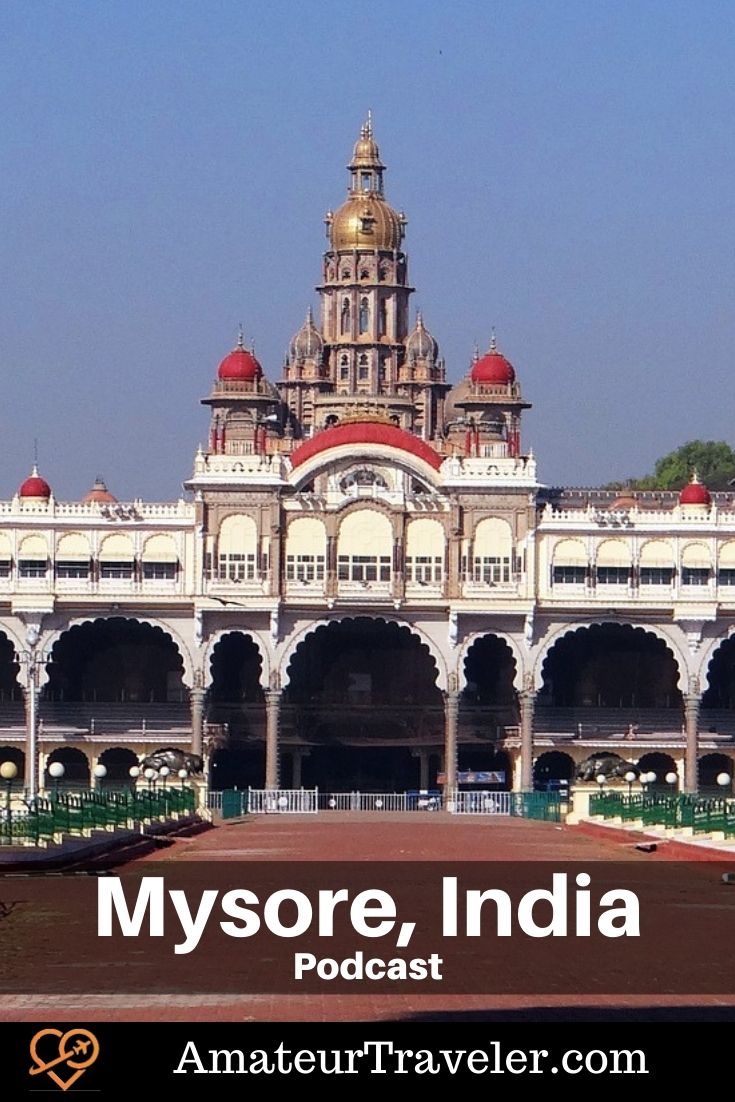
+Chris Christensen | @chris2x | facebook
4 Responses to “Travel to Mysore, India – Episode 740”
Leave a Reply
Tags: audio travel podcast, india, mysore, podcast


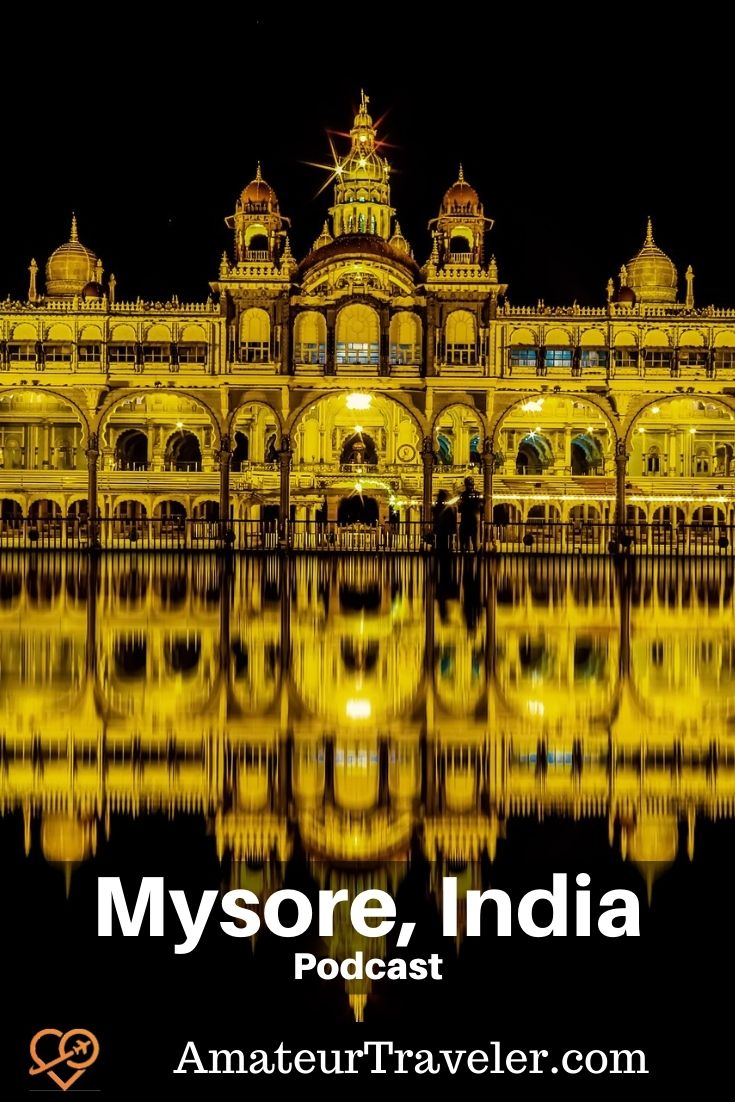
 Travel to India – Episode 317
Travel to India – Episode 317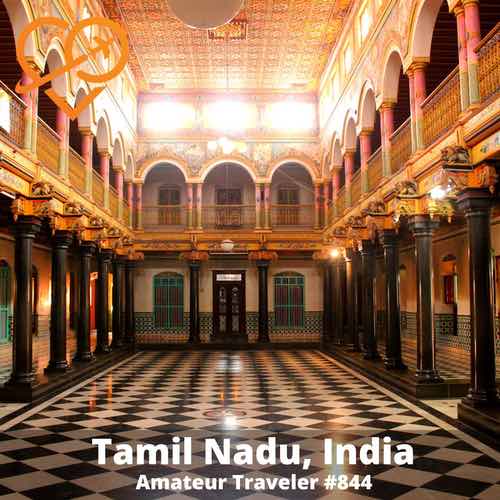 Travel to Tamil Nadu, India – Episode 844
Travel to Tamil Nadu, India – Episode 844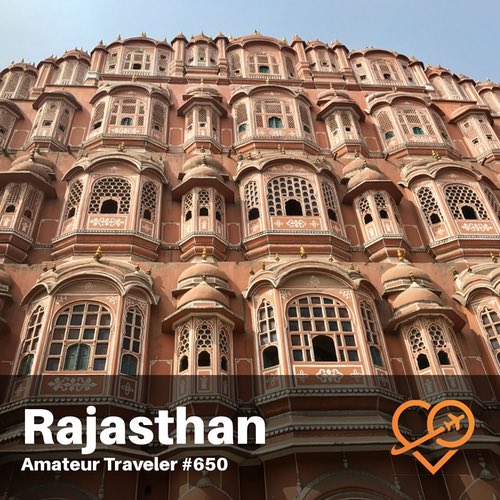 Travel to Rajasthan, India – Episode 650
Travel to Rajasthan, India – Episode 650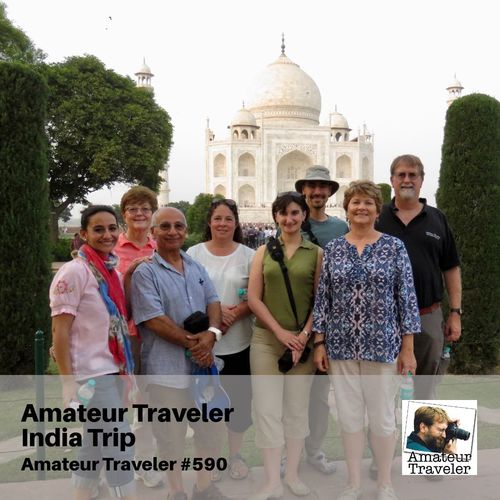 Travel to India – Episode 590
Travel to India – Episode 590

kumar
Says:March 17th, 2021 at 3:18 pm
I listened to the Mysore podcast. Rahul said Mysore is at 5000 ft above sea level, No it’s at 2500 ft. Also, he does not know Kannada, the local language, and seems to be proud of it, the way he talked. Next time, get someone from the state who know the facts, and who’s proud to be a Kannadiga. He just seemed to be showoff.
Chris Christensen
Says:March 17th, 2021 at 8:47 pm
I didn’t think he seemed proud to not know the language. I am afraid that is pretty common in the U.S. We are a nation of immigrants but often lose the knowledge of the language in the first generation. It was true in my dad’s side of the family. My grandfather came from Denmark as an infant and never learned the language even though his father spoke no English when he arrived.
Chris Christensen
Says:March 29th, 2024 at 8:53 pm
update from Rahul Iyer
Hello Chris
I hope that all is well for you regarding the Amateur Traveler podcast. We did an episode together on Mysore India (#740) in January 2021. Don’t not know if you want to append anything to this in the form of notes, as some things have changed as of February 2024. I was just in Mysore India in February 2024, and there are a few things that are different from what we discussed. Here are the obvious things.
I was there with my wife and sister-in-law (sister-in-law is from Vietnam) to attend a wedding for my cousin (he lives in Atlanta and was getting married in Mysore where he grew up..as was his now wife).
1. Mysore has become much busier, crowded, chaotic, and it is visible. Traffic can be scary. I do not know if I would recommend bicycling in Mysore much anymore. Not with the way the roads are, and how the traffic is. It is not that it is bad. It is more for the bicyclist’s safety. Traffic is that chaotic now. This has affected the air quality in Mysore at times.
2. You can now get around Mysore via Uber. The tuk-tuk three wheelers can be summoned by the Uber App, and most of the rides are less than US$1 or US$2. Most tuk-tuk drivers are easy to work with. They will ask you show them the OTP Confirmation Code on the Uber App to use this. It makes it a lot easier to negotiate fares (as Uber fares are fixed). You can do similar with an app called OLA for India.
a. Some Uber drivers do not want to use the App and want to charge you 2-4 times more. Use your judgement and tell them to take a hike as needed. Just walk away. Usually the driver “caves”. I had to tell one tuk-tuk driver to “take a hike” and walked 10 feet to another driver and tuk-tuk who was ready to work with me.
b. You can also use the Uber fare as a start point when negotiating a fare if you do not want to use Uber directly. Generally, you can get them to knock off 10% in most cases.
c. Also, in the city center, around Devaraja Market (still a very popular market, and main place that people shop at—locals and foreigners) it is very walkable. The Mysore Palace is a doable short walk from Devaraja Market.
3. With the increase in traffic and people, there is now a bit more pollution, which is expected.
4. They now have a few shopping malls in Mysore. Two of them are The Mall of Mysore, and the Forum Mall. Both have closer to “USA” prices for clothes. They have Indian and Western style in the stores. Same for their food courts. My sister-in-law from Ho Chi Minh City (Vietnam), who was traveling with us, said that clothes in India are less expensive than Vietnam.
5. Regarding food in Mysore, there are now so many cafes all over the place. Some very Western like McDonald’s and Subway. Others more traditional Mysore style. You will practically find a Western style coffee shop almost every block and a half in Mysore (Starbucks, etc). Of course, they have Western costs.
For Breakfast each morning, we would rise, and clean up. We would then get the tuk-tuk and go to various cafes for breakfast (generally one that served traditional South Indian Mysore style). The ones that we tended to patronize in Mysore are:
• Mylari Dosai House in city center
• Gurudarshini Dosai Palace in city center
Generally, the costs were the following accordingly for breakfast
Combo:
• Masala dosai, various kinds (paper masala dosai, Mysore masala dosai, etc)—lentil crepe with potato and other kinds of fillings
• FYI—“paper” refers to the crepe being “paper thin”
• Chai (tea)
• Sambar (stewed vegetables and lentil)—curry
• Some kind of sweet (usually semolina, butter/milkfat, and sugar based)
The total cost was around US$2-US$4 depending upon what you got.
You could even get idly with coconut chutney and sambar instead of dosai for similar regarding breakfast. Idly is steamed rice cake (maybe chewy). Most cafes like this open at 7:00 in the morning and can be busy.
Many of the customers are salary workers now working in Mysore’s budding technology economy. Mysore/Mysuru is becoming the “alternate” to Bangalore/Bengaluru for companies to locate their technology centers to.
Additionally, there are many choices for international fare and non-vegetarian fare. Some of the places we went to are as follows. We went there because my sister-in-law from Vietnam, who was traveling in India with us, wanted something other then Indian fare sometimes.
They have a few Chinese restaurants. One we went to was called Jade Garden. It was very similar to what you would find in any Chinese restaurant in the USA. You will get your typical Chinese style stir fries and sautés (chicken and fish primarily)
Another place we went to is called Empire Hotel (in India “hotel” sometimes refers to restaurant—not a lodge). It is a fast casual regional food chain for non-vegetarian Indian food (based out of Bangalore/Bengaluru). You will find things like chicken kababs, mutton kababs, and even mutton burgers on the menu. Their signature is the mutton biriyani (a dish of cooked rice, mutton, and spices together)—very filling. It is popular enough.
It is very rare that you will find anything with pork or beef, due to religious restrictions of most people in India (Hindus don’t eat beef, and Muslims don’t eat pork). Chicken and fish are popular. BTW, Mangalorean style seafood is popular in Mysore (Mangalore is a city closer to India’s West Coast, a few hours straight West by road of Mysore). Also, Mysore is starting to get influenced by Kerala style preparations (the Kerala provincial border is about two hours’ drive Southwest of Mysore (Mysore is in Karnataka province). Kerala style food can still be vegetarian but is unique (primarily for it’s ubiquitous use of coconut as a base for curries and related).
6. There are now several hotels in Mysore. Many Western chains (US and related). Some of the ones that are there now are:
a. Radisson Blue
b. Fortune JP Palace
c. The Oberoi
d. various Accor branded hotels (Novotel, Sofitel, Ibis, etc)
e. Sheraton
f. Marriot
g. Intercontinental
h. Iconic Hotel Group
Yeah, some are pricey. Fortune JP Palace is maybe more budget friendly, much like Ibis.
In February 2024, we stayed at a place called Xcel Luxury Apartments (Apartment Hotel)—in Tilak Nagar section of Mysore City. It was a nice budget friendly hotel that catered to Westerners (staff spoke excellent English and knowledgeable). The place was clean (very clean). We booked it on AirBnB, and it was more of a self-catered apartment, with a functional kitchen. It was clean. Yes, there are quite a few AirBnB listings in Mysore now. Some are quite pricey.
Tilak Nagar is pretty much in the city center. This is where we stayed. We were literally within a 10 minutes’ walk from the main Mysore regional bus terminal. Most of the hotels and Airbnb’s you want to target are in city center.
If you can, get a place in Tilak Nagar of Mysore, as most everything you want to see is close by.
Mysore is walkable, though at times the traffic is chaotic (use the tuk-tuk if you are concerned).
7. In Mysore itself they have added a few things…rather one thing. They cleaned up a reservoir for holding water, and made it a nice, preserved area and park now. It is called Karanji Tank Lake. It has some recreational areas for boating (kayaking), and related, along with some trails. It is easily accessed from the city center. Get a tuk-tuk or Uber to take you there.
8. Regarding getting in and getting out of Mysore. You have more options now.
Mysore has a domestic airport now, just outside of the city. They have yet to get international connections, but they have domestic air connections. The most frequent right now is on IndiGo Airlines India LTD from Hyderabad Airport. Indigo Airlines leaves a lot to be desired, but it is perhaps okay for domestic flights. It is located about 7 kilometers outside the town (to the South). They are working to get international capability at this airport
You can still fly into Bengaluru/Bangalore International Airport (Kempe Gowda International Airport), and they have many flights, international, from most places. You can get connections from many places. In February 2024 I flew to Bangalore from Arizona via San Francisco and Doha (Qatar), on Qatar Airways. You can also use airlines like Air Asia from Kuala Lumpur, or Emirates from Dubai or Abu Dhabi. They even have flights to Bangalore from Europe, and elsewhere.
From Bangalore International Airport you can connect to the Karnataka State Regional Transit Company Bus (KSRTC), called the Mysore/Bangalore Flybus (tan colored bus). It leaves from both Terminal 1 and Terminal 2 in Bangalore every 45 minutes. It is an air conditioned, Mercedes or Volvo bus, and is fairly affordable..about US$15-$20 one way. It arrives at the KSRTC Bus Stand in central Mysore in about four hours from Bengaluru Airport. The highway from Bengaluru to Mysuru is a modern, controlled access, interstate type, highway. This bus has its own dedicated bay at the KSRTC Bus Stand in central Mysore. It is very comfortable. Be sure to pre-book this online if you can, as seats get sold on this pretty quick. The bus usually leaves for Bangalore airport with every seat sold out of Mysore at peak times. It is very popular. Most of the people using the bus are tourists, or those traveling on business.
9. The University of Mysore has just grown over the years. Mysore is a university town, with the University of Mysore being a renown place to study. It attracts foreign students, and local students. The university has just grown and gotten bigger. Many of the buildings in the city center are now part of the university.
10. Regarding the Mysore Palace being lit up at night. It now is only done once a week on a Sunday night. It is packed with people now waiting for the event each time it occurs. It used to be done nightly in the past.
11. Last few comments:
a. Climate change is affecting Mysore and surroundings. Mysore is getting hotter, and drier. Less rain then in the past. So certain things in Mysore will be affected due to less water. Not bad yet, but I have seen some things. Krishna Raja Sagar/Brindavan Gardens is closed at times because of near drought conditions affecting the Cauvery River and water (not enough water for the water fountains and such).
b. Quite a few of the admission tickets now are paid via an app on your smart phone (no physical cash payment).
c. Mysore is now potentially attracting too many tourists. It is now among the most visited areas in India after Delhi-Jaipur-Agra. Mysore Palace is now, by numbers of tourists, the 2nd most popular tourist destination in India. Almost every place is now crowded. If you want a chance now in some places, this means showing up at 7:00 or 8:00 in the morning when they open the door. Don’t listen to locals and wait until after 12:00 Noon. Verify the opening times and show up when they open.
Add to it that Mysore is now slowly attracting technology workers and companies away from Bangalore, and elsewhere (Bangalore is still the premier technology center in India, but it is fully saturated, and there is “nowhere else to grow”). Mysore is becoming the 2nd hub for Karnataka for technology workers. There are data centers and related going up in Mysore (rather than Bangalore). Mysore’s proximity to Bangalore is perhaps part of it. Mysore is also starting to be a “bedroom community” for Bangalore, as it is just 50 minutes in the commuter train to Bangalore, depending upon where they must report for office.
So, Mysore is experiencing “growing pains”. It was once a pensioner’s paradise, religious pilgrimage center, and old royal city. It is now adding technology city and bedroom community to the list of things to describe it.
It used to be quiet, and calm. It still is relatively calmer and less chaotic than other Indian cities. However, it is getting busier now. It is getting more gentrified…growing pains.
Who knows…perhaps in another 10-15 years I will asking you to do an episode on Hasan or Srirangapatnam (where the Tipu Sultan’s Summer Palace is located), and with no mention Mysore or Bangalore. Both of those towns are now starting to be “construction zones” with new buildings going up everywhere. Hasan is “gunning” for its airport to be developed next (after Mysore). Srirangapatnam is too close to Bangalore or Mysore for its own airport.
Kempe Gowda International Airport in Bangalore is slated to reach full capacity in 2028, well ahead of schedule. It was designed with the expectation to reach full capacity by 2035. The area around the airport, once open fields, originally away from the main city of Bangalore, is now a bustling small city in its own right (with all the urban issues that come with it). Devanahalli Village, where Bengaluru’s Kempe Gowda Airport is located, is effectively a city (no longer a quiet “village”). The local residents are not necessarily happy, but are learning to live with it…even the farmers.
Rahul Iyer
Says:March 31st, 2024 at 9:23 am
@kumar
1) As far as the height above sea level, yes it is high. When comparing it for people in the USA, the closest analogy for them would be Denver (Colorado). That is what I was eluding to. We need to explain things in terms that people understand, and we need to explain it in a context.
2) Though my name is definitely Tamil (not Kannadiga)–adopted surname is “Iyer”, my mother, my grandfather, and many of my aunts were born and raised in Mysore. My mother is not an Iyer, and not a Kannadiga. My mother, if you want to call it anything, is an Iyengar. Mysore is becoming very cosmopolitan, and there are many people of different backgrounds. For the record, my family has been in the Mysore area since the 1940s at a minimum. My grandfather (mother’s father) moved to Mysore from Jamnagar. My grandmother (mother’s mother) is from Srirangam (closer to Chennai).
The name of Iyer, my adopted surname, I get from my father, who traces his roots to Kanniyakumari. He is Tamil. He is Iyer. I was born in Chicago. You have many people like this.
As far as the language issue, you will find that many people who are American who do not know the language of their ancestors. It does pain me that I fall into that group. The questions and concerns raised are as follows:
1) Which language do you suggest I learn? Kannada and Hindi (what my mother speaks), Tamil (what my father speaks), Malayalam (what my father and his family speaks), or Vietnamese (what my wife and my in-laws speak)?
We live in this world where many people marry people of different backgrounds. This is the new world. Within my family (extended family) I have relatives who speak, English, Coorgi (Kodagu, Karnataka), Spanish, Polish, Ukrainian, Tamil, Malayalam, Hindi, Kannada, Vietnamese, Japanese, Korean, French, Slovak, Norwegian, Marathi, German, Arabic, Afrikaans, Swahili, Dutch, Flemish, Khmer, Thai, Lao, Fujian Chinese, Mandarin, Cantonese, and even Russian. Additionally, religion is quite diverse amongst all of them relatives. All of them work and live in the various countries where the languages mentioned are a necessity. So, what does that make me? This is the new world we live in. My family is the “United Nations”. The common language is English.
The language skills that I have acquired (strategically) are English (my native language), Spanish (I live in Arizona USA), and Vietnamese (I am married to a Vietnamese woman for 20+ years and share a life with her).
I am still Hindu. My wife is still Roman Catholic. I would not have it any other way. My wife speaks Vietnamese, Japanese, and English (she is learning Spanish).
People adapt and make things work. You choose what matters to you in your life. I have made my choices. BTW, I am a world traveler (not just India).